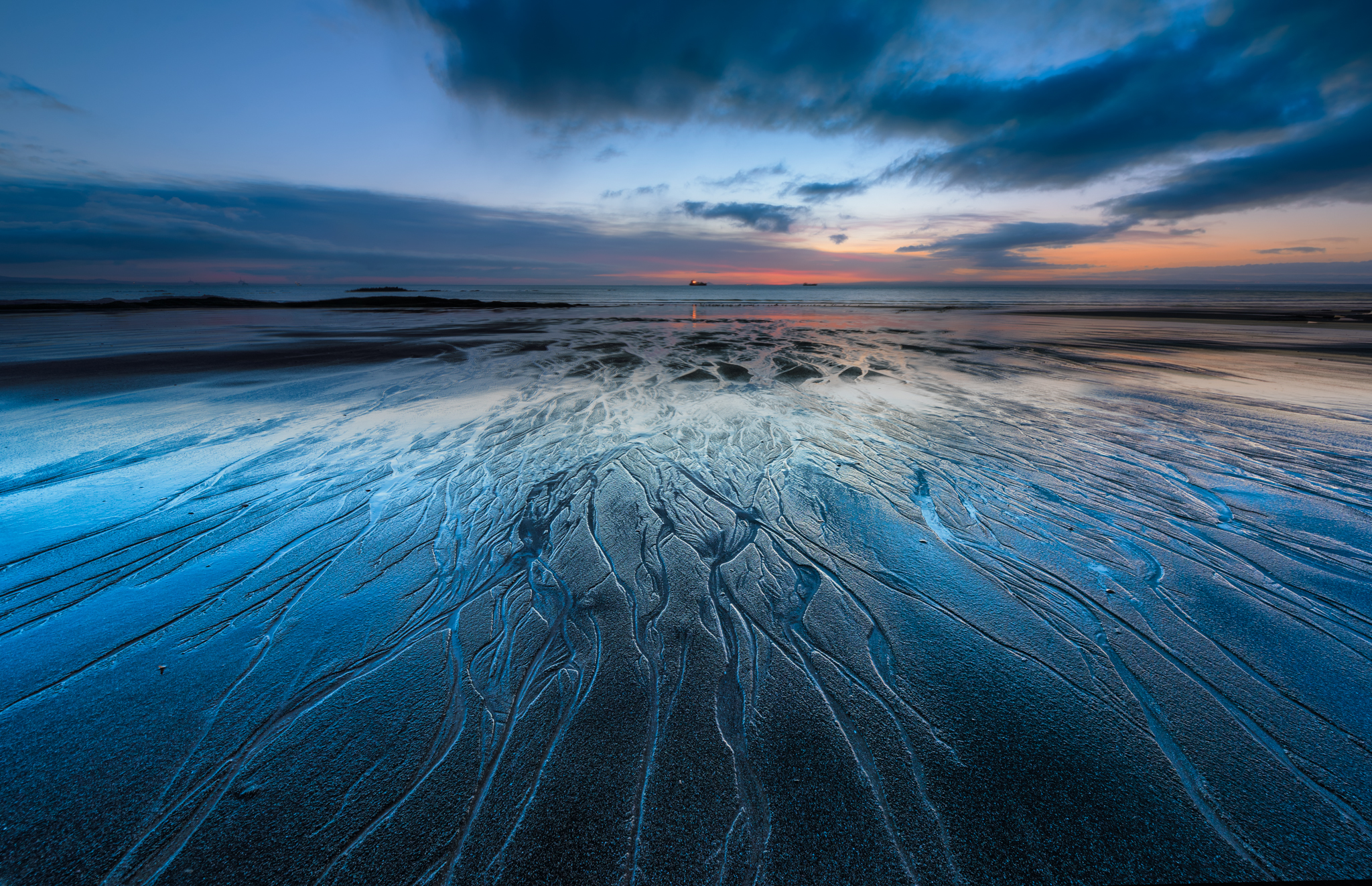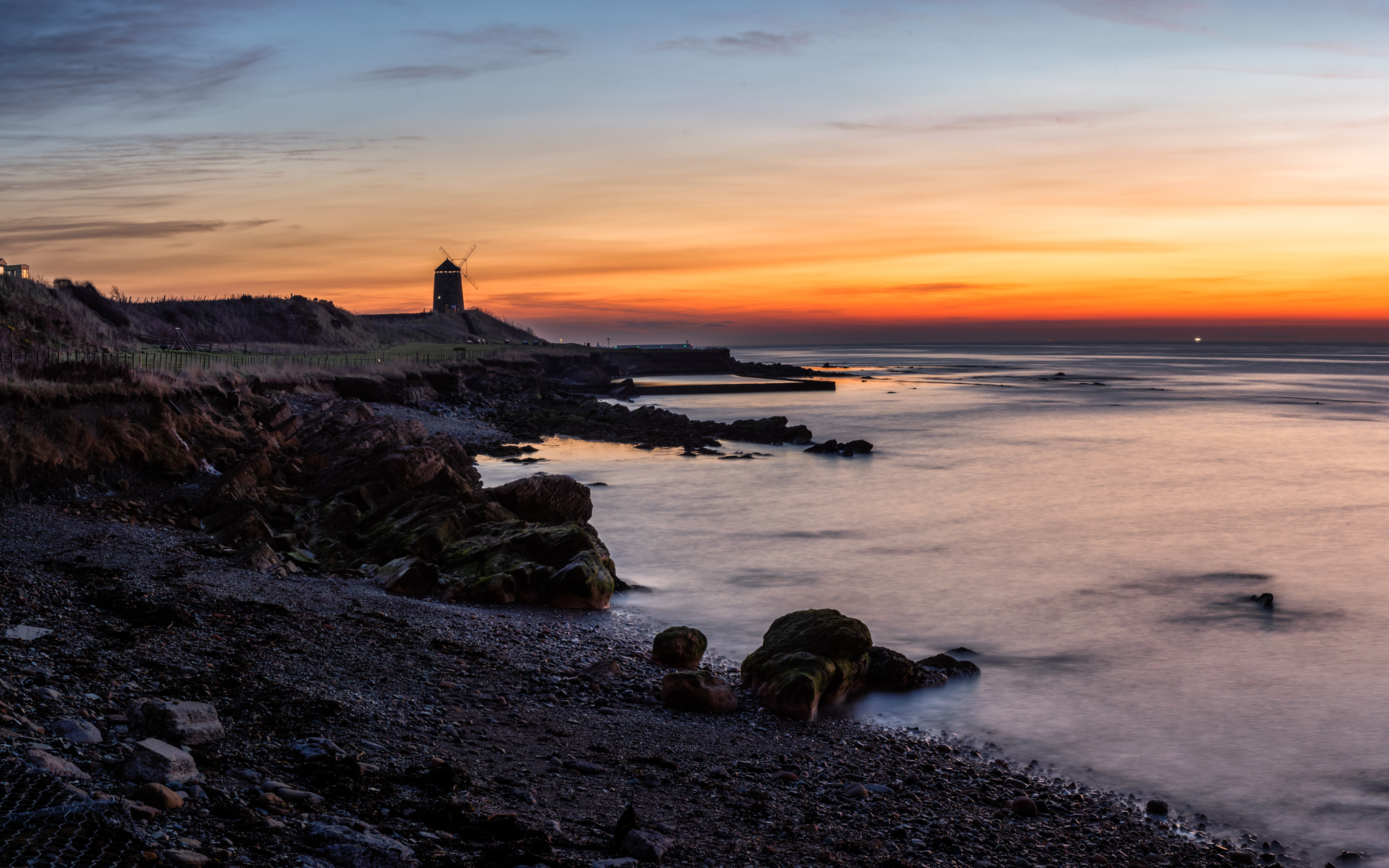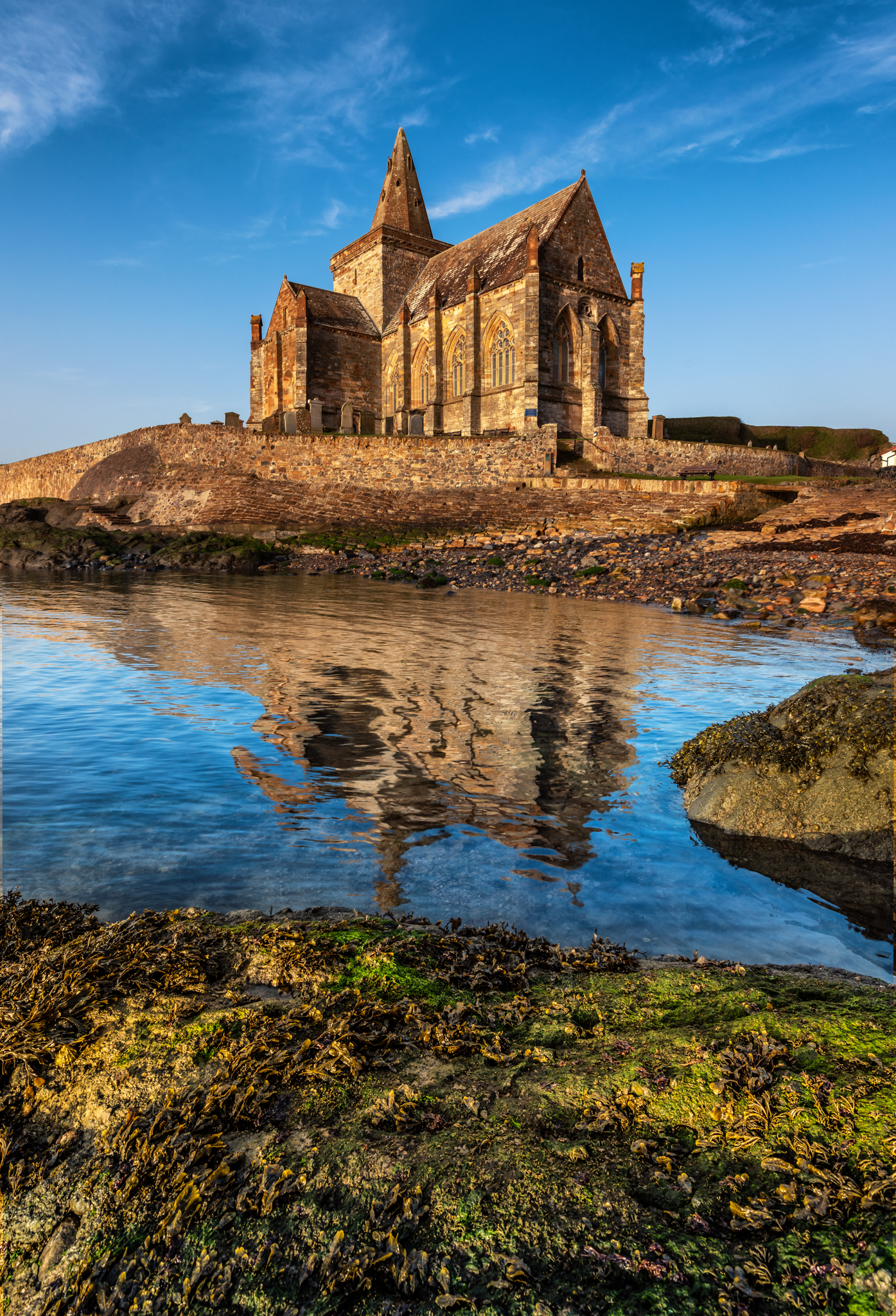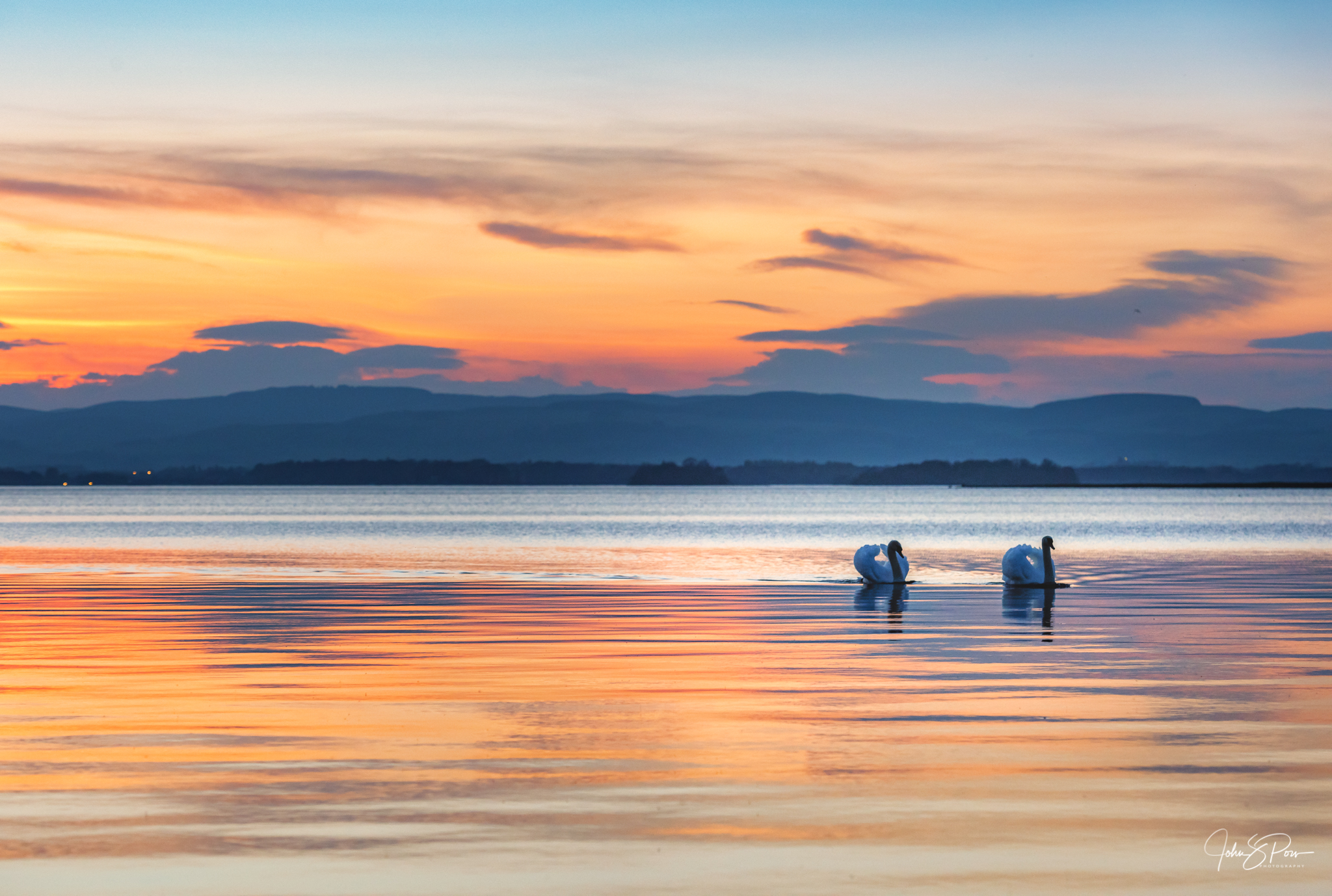The background story to capturing a vivid sunrise image.
Read MoreBalvaird Castle
Risk Assessment for Photographers
In this blog I am going to share my thoughts on risks for landscape photographers and suggest some ways to manage these.
Read MoreStirling Castle with snow covered Ben Vorlich and Stuc a’Chroin.
The Best Place to Photograph Stirling Castle.
In this blog post I tell the story behind this stunning shot of Stirling Castle and the snow covered mountains and importantly give the location the shot was taken from.
Read MoreThe Swilken Bridges and Old Course Hotel, St. Andrews
Fife Five - My Top 5 Photography Locations in Fife.
This blog has been adapted from a piece I wrote for the Welcome to Fife website.
I am a Fifer born and bred. I have lived and worked in the Kingdom for almost all of my life. I first became interested in photography when I worked as a Saturday boy in Dixons camera shop in Kirkcaldy in the early 1980s. I have had a passion for photography since then.
I was a Police Officer for my first career and was the Divisional Commander for Fife under the old policing structure. I think it is fair to say that this gave me a unique perspective of the Kingdom, its people, its topography and its geography. Since retiring form the Police I have pursued my passion for photography working as a full time landscape photographer. I now find myself all over Fife, and beyond, taking photographs for private and corporate clients, for newspapers and magazines, but always for my own enjoyment. When I am not taking photos I teach photography and camera skills and I truly believe that the scenery and light found here in Fife make for an unrivalled photography learning experience.
With so many great locations to choose from I found it hard to pick just 5, so while I have listed only 5 here I would encourage anyone who is at interested in photography to use these as a starting point for a photographic journey through a beautiful and extremely interesting part of the world.
No. 5 - Seafield Beach, Kirkcaldy
Seafield Beach, Kirkcaldy during Blue Hour
Probably one of the lessor known sites in Fife, yet I have taken more photographs here than I have at any other place. Seafield is my local beach and I often go there when I am looking for inspiration. If you are photographing the beach for the first time there are some great compositions to be had using the old sea wall or Seafield Tower. Take your telephoto lenses too, you will be amazed at the variety of wildlife to be seen so close to an urban population. Seafield beach is one of the few beaches in Fife that faces due east and is therefor a great location to photograph the sunrise at any time of the year.
Repeatedly going to photograph the same spot creates a challenge to find new perspectives but the attraction to this beach for me is the constantly changing light and the way that each change of the tide leaves a new composition in the sand just waiting to be discovered.
The Wind, Falkland
No. 4 - Falkland
There are many picturesque villages in Fife, two in particular Falkland and Culross are TV stars made famous by the Outlander series. I have photographed both many times and it was a hard choice to decide between them, but for me Falkland has the edge as a location to photograph. The photo opportunities at the Palace, the Bruce Fountain and the High Street are well documented, but have a wander round some of the back streets and you will discover charming old houses built along cobbled streets that have not changed for hundreds of years.
Falkland at Christmas
If you are visiting Falkland make sure you give yourself time for a walk through the Falkland Estate up the Maspie Burn to the Yad waterfall, your Instagram will be overloaded by the time you reach the top, and you will have seen for yourself that money really does grow on (in) trees in Fife.
No. 3 - St. Andrews
St. Andrews West Sands
During my policing career I worked in St. Andrews a number of times and grew to love it. The unique population of the town give it a charm and culture that I have not encountered anywhere else in Scotland. There are many great examples of modern and historic architecture to be found and I could spend days photographing the many distinctive buildings alone. Although the Cathedral and St Salvators are often the first choice of subject to photograph, I always head down to Golf Place, Bruce Embankment and The Links first to see what I can find. Obviously there is the iconic view of the R and A Golf Club seen by half a billion TV viewers worldwide at the end of each St Andrews Open Golf Championship, but if you can look beyond that there are many more interesting views and sights to photograph. The West Sands, of “Chariots of Fire” fame are just a few minutes walk from Bruce Embankment and give a wonderful view of the town’s skyline, but the beach itself enjoys an impressive quality of light at any time the day.
No. 2 - St. Monans
St. Monans Salt Mill
Any one of the East Neuk fishing villages is a wonderful subject to photograph and I really recommend that you visit them all if you can. However, if I am being pushed to pick a favourite it has to be St. Monans, as in a 10 minute walk you can photograph 5 iconic locations which sum up the East Neuk:
The Salt Mill - a wind powered mill on east side of the village alongside the ruins of the old salt works.
The unique architecture - Pan-tiled whitewashed houses with crow-stepped gables can be found throughout the village.
The Blocks - the zig zag entrance to St. Monans harbour is now a “go to” location for any aspiring Scottish seascape photographers. It is not for the faint hearted, but the photo opportunities when high tide, sunset and an easterly breeze combine are simply stunning.
The Harbour - not the busiest of the East Neuk harbours but still regularly used by colourful fishing boats and it has the backdrop of those pan-tiled whitewashed houses.
The Auld Kirk - This beautiful church is so close to the sea that it almost mandatory that it should be photographed with its reflection in a rock pool.
St. Monans Auld Kirk
No. 1 - The Forth Bridge
The Forth Bridges from North Queensferry Harbour
The Forth Bridge, often referred to as the Forth Rail Bridge, is a World Herritage site and is an iconic image not only of Fife, but of Scotland. I have photographed all three bridges from many different angles and have sold the resulting images to customers all over the world. Here are a few tips to consider.
Include context - try to tell the story of what is happening around the bridge by including other elements to show a sense of scale and create foreground interest or show the bridge in use to make your shots more interesting and dynamic.
Keep your horizon straight - because of the diminishing perspective the bridge looks to be at an odd angle, when viewed side on. The natural reaction is to turn your camera and straighten the bridge, but this then puts the water and the horizon at an odd angle which will make viewers feel uncomfortable.
Look at the light - The red painted bridge is the perfect contrast to blue sky so in good weather it is the ideal combination to photograph. However, the reality will be that the weather and light will be constantly changing, so seek out areas of shade and light to add interest to your photographs. With a little planning the bridge can be the foreground to a sunrise or sunset at any time of the year. When the sun is low just after sunrise or just before sunset the warm tones bring out the very best of the red colour and magnifies the unique shape of the bridge with long shadows.
I have a whole page of my website dedicated to photographs of the three bridges, click here.
The “Aberdonian” Crosses the Forth Bridge.
Two swans swimming in Loch Leven at Sunset. The swans are placed at the intersecting point a third of the way up from the bottom of the image and a third of the way in from the right. The horizon is in the middle of the image, but it is just one of a number of horizontal lines, so it does not split the scene.
How Do I Photograph Landscapes - A Checklist
I am often asked if I follow some formula or rules for composing my landscape images. In this blog post I explain my approach to landscape photography, consider some of the common approaches and promote my checklist to give options to consider to improve your photography.
New York - The Story Behind The Image
This is the last in my little trilogy of pieces about my images which recently placed well in the Digital Photographer “Cityscapes” competition.
My image is of New York, more specifically Manhattan viewed from a waterfront park in Brooklyn. Shots from here were very popular in the completion and it is becoming one of the “must visit” spots for photographers visiting New York.
I first went to the spot the evening before and took some good shots of the sunset lighting up the sky. In fact I have one of these shots as a “Whitewall” (very expensive) print in my sitting room, so I was pleased with the results. But I thought there was better to be had. From research I had done I knew the sunrise would light up the front of the buildings and add colour and clarity to the whole scene. So after an early rise and interesting subway journey I was back at the spot about half an hour before sunrise. Despite the popularity of this spot for photographers I had it all to myself that morning.
There was a slight swell on the water and I decided to go for a long exposure shot to calm everything down and stretch the clouds. I was lucky that a few of the seagulls sat still for me during the exposure, but if you look very closely you can see a sailing ship moored at Manhattan had been moving about.
This was shot in RAW with my Nikon D810 and my Nikon 24-70mm f2.8 lens at 29mm. It was shot at f18 at ISO 100, which this lens handles superbly giving incredible depth of field across the shot. On the lens I had three Lee filters, a landscape polariser as I wanted the warm colours of the sun on the buildings to come through without any glare; a 0.9 stop ND Grad filter (the sky was a lot brighter than the foreground and the ND Grad filter balances this up by acting like a part of sunglasses on the top half of the image) and a Big Stopper which extends exposure time, in this case with all the filters the exposure time was 239 seconds.
In post production I increased the contrast and vibrancy over the whole picture. I also dropped the highlights in the top half to the image and opened the shadows in the bottom half which was still a bit dark despite my efforts to address this “in camera”.
I hope you have enjoyed these background pieces and if you have any questions, please feel free to contact me and ask.
Dubai - The Story Behind The Image
My image of Dubai at night came sixth in the Digital Photographer Magazine “Cityscapes” competition. The image is of the Sheikh Zayed Road interchange in Dubai with the majestic Burj Khalifa in the background.
Before I go on a trip I look the pictures posted by local photographers on social media to get ideas. I saw a couple of versions of this image on-line and immediately knew I wanted to take it. After studying google earth I managed to work out it was taken from a balcony at the Shangri La Hotel. I contacted the hotel before I left the UK and got permission to go onto a balcony on the 42nd floor.
I arrived for this shot about an hour before sunset and took photographs for a couple of hours. In terms of the composition of the shot I was quite limited by the fact I was 42 floors up. I tried as best as I could to have the road running through the shot and the Burj on the left hand third line.
I used my Nikon D810 full frame camera with Nikon 16-35mm lens at 16mm (as wide as it goes). Everything was done manually and the image was shot in RAW. The aperture was f13, the smallest I use with that lens, which give me good depth of field. The focus point I used was the edge of the road running horizontally across the bottom of the frame.
It was obviously dark by the time I took this and I used ISO 64 to get the shutter speed down to 30 seconds. The long shutter speed gave the beautiful smooth light trails on the road.
I did not do much to the shot in post production except boost the contrast and vibrancy.
As always, if you have any questions, please ask.
Vegas at Night - The Story Behind the Image
The photograph of Las Vegas at night recently came second in the Digital Photographer “Cityscapes” competition and was commended by the expert panel. It has won a few competitions recently so I thought I would take a few minutes to tell the story behind the shot.
Firstly, a little bit forward planning was needed in booking a balcony room with a fountain view at the Cosmopolitan Hotel, Las Vegas, it is one of the more expensive hotels own the strip, but the views alone are worth it.
The shot is taken with my Nikon D3100 camera. This is a crop sensor camera so it does not capture the same detail as my full frame D810, but the files are a lot smaller (14 megs compared to 36 megs) which was an important consideration.
The camera was set up on a tripod on the balcony with my 16 – 35mm f4 lens (wide angle) at f13. The shot was taken at night (obviously) so the shutter speed was fairly slow, at 3 seconds. The effect of a slow shutter speed is that stationary lights are sharp while moving lights, such as car headlights are blurred. This was exactly what I was wanting, sharp neon light on the buildings contrasting with blurred lights on the roads to give an impression of the dynamism all set against the jet black night sky.
The shot was complicated as the cars kept stopping at the traffic lights and therefore I could not get the shot I wanted in a single take. Knowing this I took lots of shots using an intervalometer (a device for taking shots at set intervals). I then took 10 shots that gave light trails along all the roads and merged them in Photoshop. This was actually very simple as I just stacked 9 shots on top of the shot of the fountain that I liked best and told Photoshop only to add light which was not on an underlying layer. I know I could have picked a more dramatic shot of the fountains, but if they were any bigger they would have blocked out other details in the shot and therefore this is the best compromise position.
I didn’t do much else in post production, except increases the contrast and saturation a little bit so that all the colours stood out against the dark. I also removed trails that a couple of aircraft had made in the sky as they were too much of a distraction (strange thing to say against all this action, but I know what I mean).
If you have taken time to read this, thanks, I hope you found it useful. If you have any questions then please just ask.
















